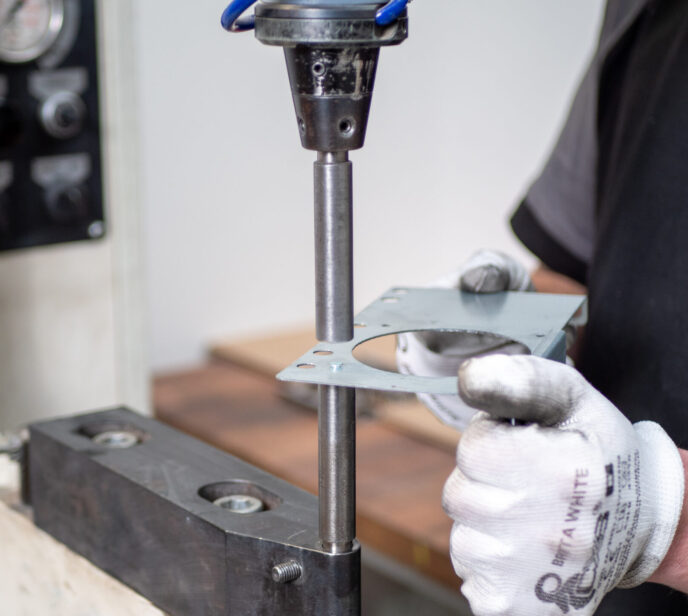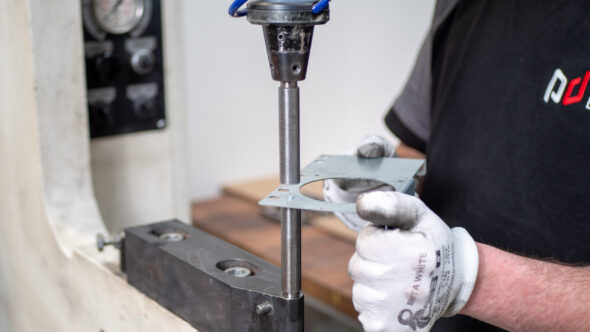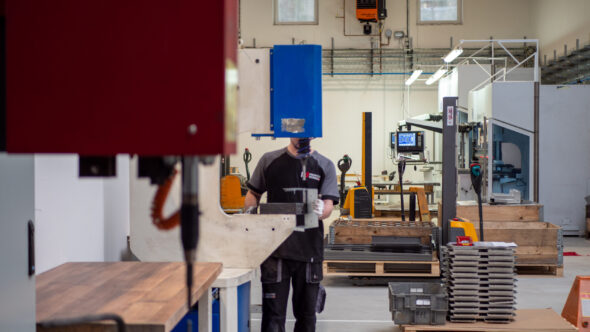This makes it possible, for example, to insert threads into thin sheet metal or relatively soft metals such as aluminum. With these materials, there is always a risk with cut threads that the thread will be damaged or completely torn out during screwing.
Why press-fit instead of welding?
Welding techniques are diverse in their application and are well suited for fastening all possible elements to sheet metal. Unfortunately, the welding process is also not always suitable for all materials as it inevitably heats up the material, which is not desirable in certain cases. In addition, it is laborious to achieve accurate positioning and a firm connection during welding. Press-fitting, on the other hand, is energy efficient, clean, and precise. The whole process is simpler and easier to automate.
Press-fit technology is especially good for locking elements such as bolts, pins, and nuts. Press-fitting provides extra stability to these elements, as the displaced material spreads into grooves and other tight spaces, providing a strong, load-bearing connection.
Types of locking elements
- Nut – An annular element with internal threads that is threaded onto a bolt.
- Bolt – A pin-shaped element that passes through other elements to secure them with the help of a nut.
- Spacer – An element that is inserted onto a bolt between two other elements to create a precise distance when fastening.
If you are interested in how we can assist you with your project, please feel free to contact us!

 +420 388 314 321
+420 388 314 321  obchod@prostor-design.cz
obchod@prostor-design.cz 



